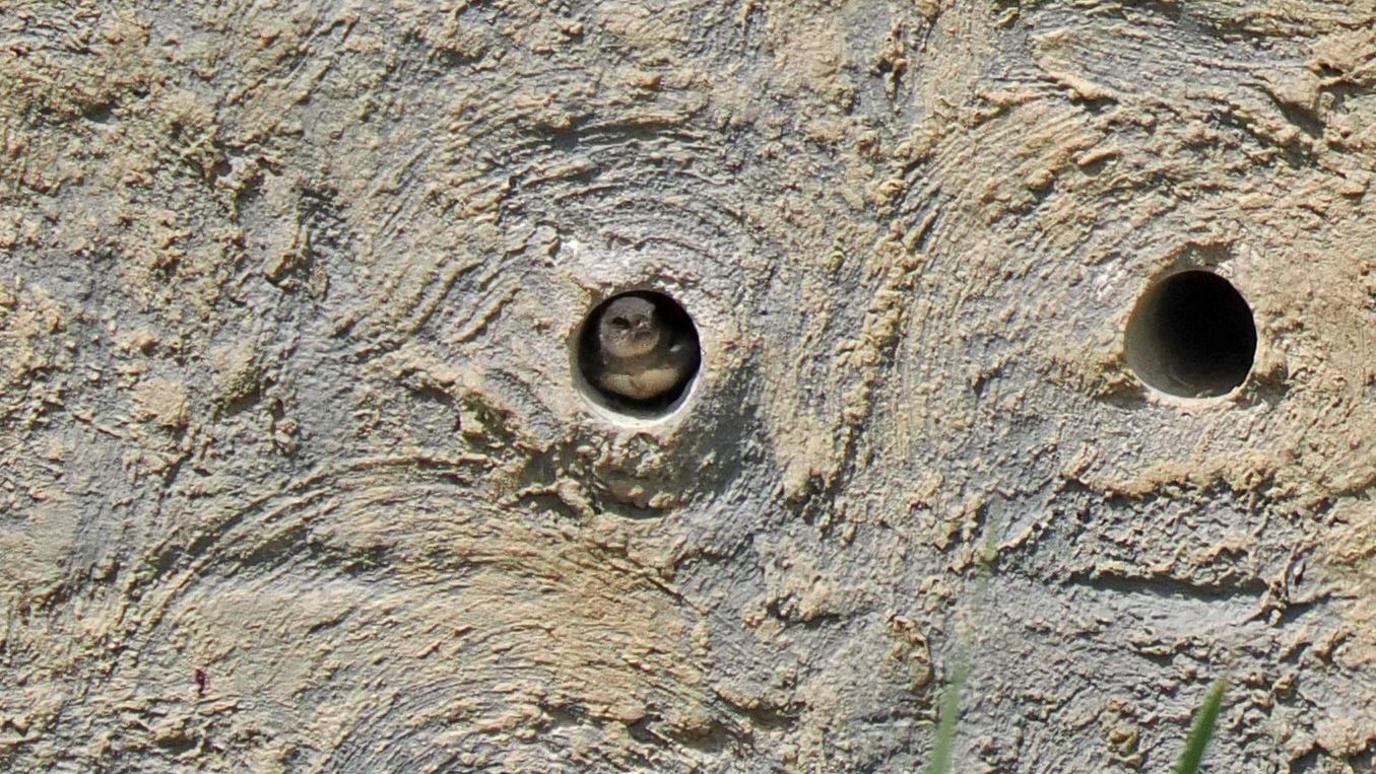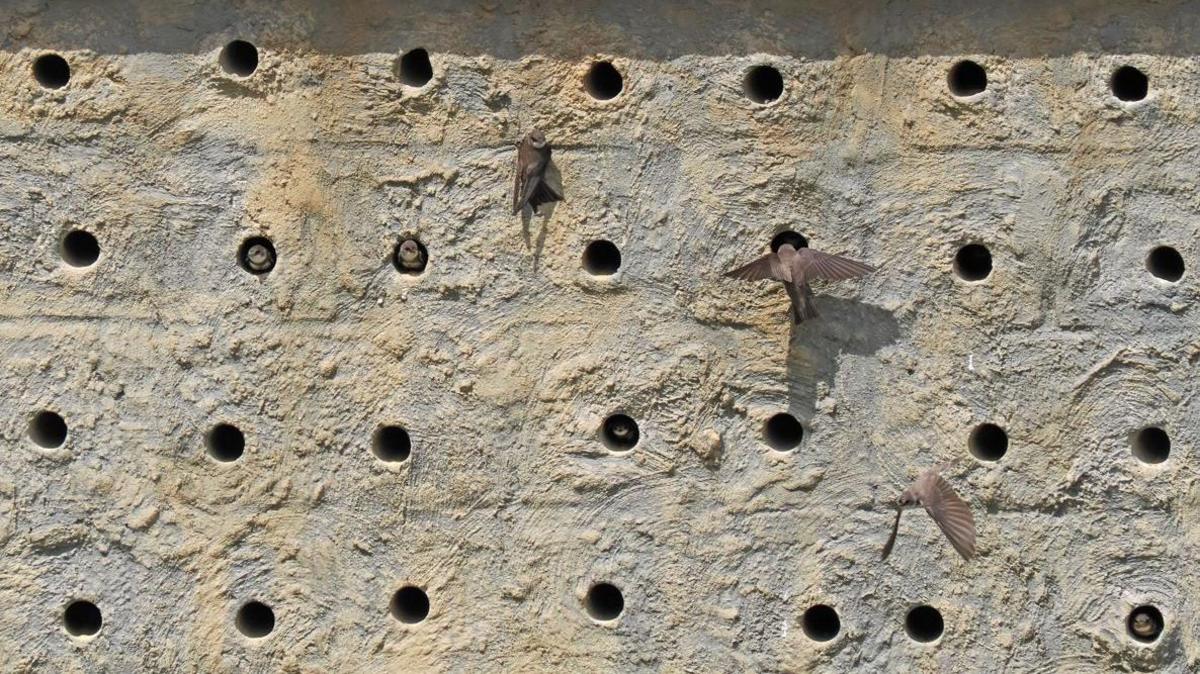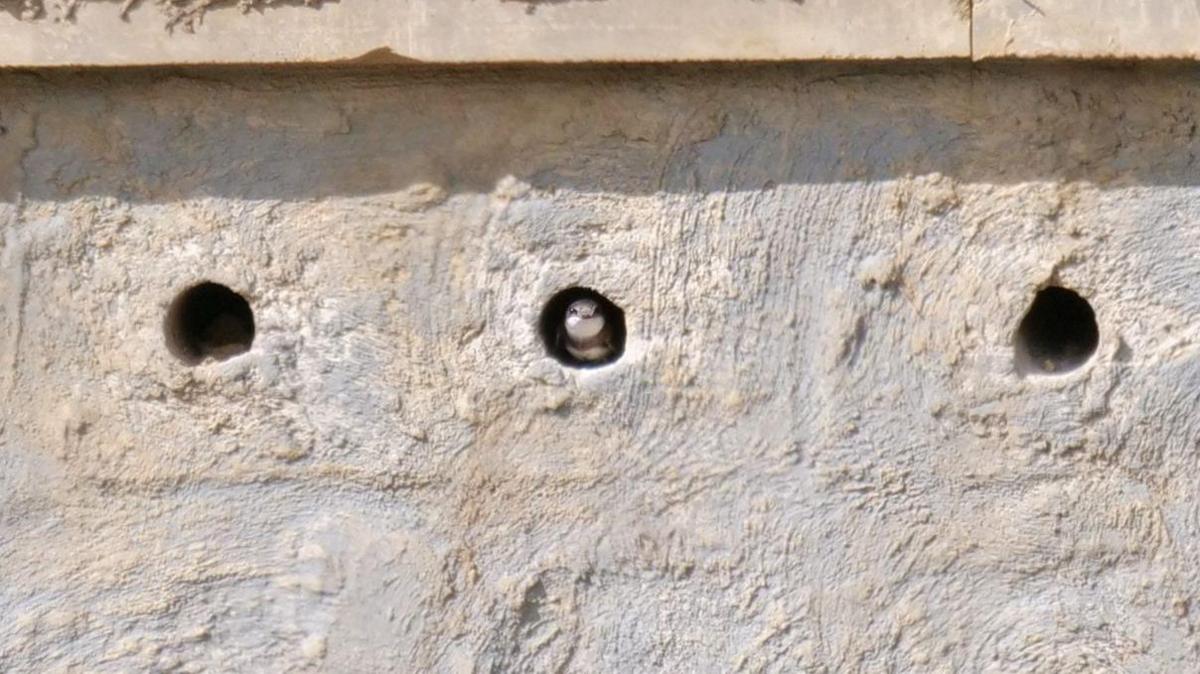First sand martin chicks spotted at nesting site

The sand martin chicks have been spotted at the Washington Wetland Centre nesting site
- Published
Sand martin chicks born at a newly installed habitat have been spotted for the first time.
The chicks arrived at WWT Washington Wetland Centre in March, just eight months after the artificial nesting bank was built.
Sand martins usually breed twice a year and lay four to five eggs each time.
Reserve manager John Gowland said if the birds raise a second brood there could be about 70 chicks born from eight breeding pairs.
Sand martins are the smallest member of the European hirundine family of birds, which includes swallows and house martins.
The birds hunt and feed over the centre's Wader Lake.
The nesting bank was built as part of habitat management work taking place around the lake, which the centre said has already improved the variety of wildlife in the area.

The nesting chambers have been giving up their secrets
Mr Gowland said: "There were lots of positive signs early on, with nesting material such as grass and feathers seen being taken into the nesting chambers of the artificial bank – all good signs of the birds beginning to settle and breed.
"Since the first chick was spotted, we’ve spent some time observing the bank to look for more and are thrilled to have seen at least eight chicks at different openings, which is great to see."
Sand martins lay their first eggs between late May and early June and they take about two weeks to hatch.
Both parent birds will feed the chicks on tiny insects before they are ready to leave the nest for their first flight.
WWT Washington is asking visitors to take part in a survey to track the movement of sand martins around the artificial bank.
Follow BBC North East on X (formerly Twitter), external, Facebook, external and Instagram, external. Send your story ideas to northeastandcumbria@bbc.co.uk.
Related topics
More stories from BBC North East and Cumbria
- Published3 April 2024
